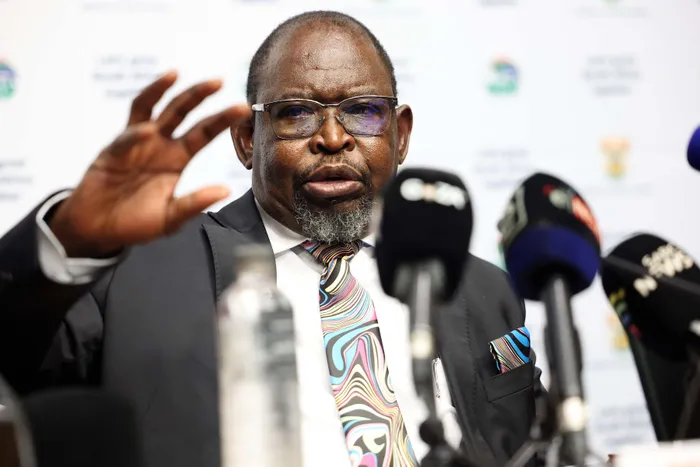South Africa’s debt mountain looms as mini budget nears

Minister Enoch Godongwana is set to deliver the mini budget on November 12.
Image: Jairus Mmutle | GCIS
The Medium-Term Budget Policy Statement will land on November 12 amid ongoing concerns about high debt, a widening deficit, and the challenges of supporting growth while managing spending - although tax hikes are not likely.
And markets are eagerly waiting this mini budget, which comes against a backdrop of sluggish economic growth and persistent fiscal strain.
The February National Budget was abruptly cancelled just before Finance Minister Enoch Godongwana’s address due to political gridlock over the proposed 2% Value Added Tax (VAT) increase.
Two revised versions were subsequently tabled in the following months, resulting in the MTBPS being delivered unusually late in November.
“When the February budget was conceived, global uncertainty was high, particularly due to United States President Donald Trump’s renewed trade conflict rhetoric,” says Maarten Ackerman, chief economist at Citadel.
“The budget, while optimistic on growth, acknowledged persistent fiscal strain, with debt-to-GDP projected to peak near 80%, a key justification for the proposed VAT hike,” he said.
Since then, the global picture has brightened. Tariff fears proved milder than expected. Gold demand surged amid dollar concerns, boosting exports.
Platinum rallied after US policy shifts. The JSE hit record highs, and the rand strengthened.
“These developments have eased fiscal pressure, but the recovery remains largely commodity-driven,” Ackerman noted.
“With low productivity and high population growth, South Africa’s potential growth remains around 1%, far too low to achieve meaningful fiscal consolidation, Ackerman said.
Fiscal strain persists. South Africa spends more than it earns. SARS is lagging on an extra R35 billion of revenue but is on track for its baseline target, Reuters reports.
Annabel Bishop, Investec chief economist, says the MTBPS “is not expected to see any tax changes but provide revenue and expenditure updates”.
Bishop notes expenditure has dropped slightly to 41.4% of budget, down from 43% last year. Even so, South Africa is still spending more than it earns, she says.
The OECD paints a stark long-term picture.
“Public debt has risen from 31.5% of gross domestic product (GDP) in 2010 to a projected 77% of GDP in 2025," it said.
Mounting debt and higher interest rates have led to growing debt-servicing costs, expected to reach 5.2% of GDP in 2025, up from less than 3% of GDP a decade ago, said the OECD.
Elevated debt-servicing costs are limiting the government’s ability to fund much-needed social spending and public investment, the organisation said. Recent primary surpluses have limited increases in debt, it added.
On the fiscal side, high public spending pressures call for a continued consolidation strategy, said the OECD.
Supporting government revenues will play a key role in reducing debt, said the OECD. To finance these measures, broadening the narrow tax base remains essential.
“Key steps include reducing personal income tax expenditures, enhancing corporate income tax compliance, strengthening municipal property tax collections, raising the net effective carbon tax, and raising the VAT rate while reducing the number of zero-rated VAT items with targeted support for the vulnerable,” the organisation said.
The MTBPS follows South Africa’s recent exit from the FATF grey list, which could support foreign inflows.
But Ackerman warns that growth must pick up and reforms must accelerate. Red tape, infrastructure bottlenecks, and low competitiveness cannot persist if South Africa wants lasting fiscal stability.
Ackerman notes that it is “only through sustained reform and policy certainty can South Africa stabilise its debt trajectory”.
IOL Business